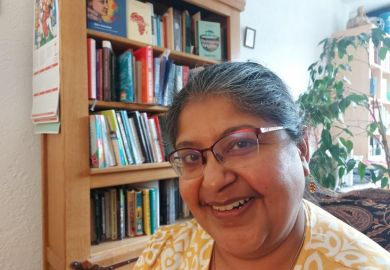John Stokes gives an entertaining and scholarly account of an octet of monstres sacrés , the majority of whom played to London audiences at the St James and the Royalty theatres in the 19th and early 20th centuries, during what is mythically considered to have been "the golden age of acting", with Edwige Feuillère the "brilliant culmination of a dying line". He brings out the two-way process whereby English critics and writers also visited Paris and came back with accounts of what they had seen and heard, most frequently at the Comédie-Française. What his study also tells us about is the evolution in acting in the two countries, moving as it does from an emphasis on technique and rhetorical delivery to a prioritising of le naturel (however artfully achieved), and of changing critical responses to French literature in the 19th century.
The repertory is, to a modern theatregoer, frequently surprising and unfamiliar - so Stokes helpfully provides plot summaries at regular intervals. A key text is Froufrou , a now unknown "family romance" by Henri Meilhac and Ludovic Halévy, alongside a whole raft of (one suspects justifiably) forgotten dramatic works. More mainstream are the neo-classical stalwarts such as Molière's Le Misanthrope and Le Tartuffe , Racine's Phèdre , Pierre Corneille's Horace , comedies by Marivaux and Beaumarchais and, in due course, Romantic tragedy, most obviously Victor Hugo's Hernani .
Stokes's first subject is Mademoiselle Mars, who impressed Londoners in the early decades of the 19th century in comedy roles with her mastery of the "dynamics of flirtation". Stokes examines the erotic dimension to performance, paying particular attention to the role of la grande coquette , a tradition conveyed by Mars as "an unforgettable mode of the feminine, simultaneously inviting and elusive".
Rachel came next, bringing neoclassical French tragedy to the London stage in the 1840s and 1850s, as recorded critically by G. H. Lewes and fictionally in the character of Vashti in Charlotte Brontë's Villette and in George Eliot's Daniel Deronda .
Third is Madame Plessy, portrayed fictionally by Henry James in the character of Carre in The Tragic Muse , where he evokes a "certain largeness of style and robustness of art" (and Stokes works on the entirely credible principle that novelistic evidence may be taken as an approximation to historical truth, especially when it coincides with more historical data).
Charles Dickens also saw and admired her, though he became critical of her "mechanical ingenuousness", and Stokes remarks of her later performances that "even in her lifetime the actress had become evidence of the past".
Virginie Déjazet introduced a whole new dimension to the mid-century story in her cross-dressed roles, through which she applied and extended the techniques of vaudeville. Even more odd was her preference for plays set at the court of Louis XV, during which period, she apparently believed, she had enjoyed a previous existence.
The second part of the study begins with an actress who showed features that Stokes identifies with modernity: Aimée Desclée, who died at the age of 38 in 1874, was praised for "living" her roles and attracted the epithets "nervous" and "naturalistic" from Zola, as tragedy moved away from myth and antiquity into the street and the salon. Moving into the later decades of the century, Stokes singles out Gabrielle Réjane (sketched by both Aubrey Beardsley and Henri Toulouse-Lautrec), who first appeared in London in 1894 in another forgotten play, Madame Sans-Gêne , written for her by Victorien Sardou, and who epitomised in a single role the essence of womanhood in fin-de-siècle Paris.
Sarah Bernhardt's career on the stage lasted 50 years and found its greatest English-speaking admirer in Oscar Wilde, whose francophilia led him to see French Romanticism as an ideal awaiting fulfilment. Yet a collaboration never materialised: Wilde's own tribute to the movement, The Duchess of Padua , would have required a sustained performance in English of which Bernhardt would have been incapable; and London censors would not tolerate his Salomé .
Finally, Edwige Feuillère brings us to the mid-20th century and to new repertory in the works of Paul Claudel, Jean Cocteau and Jean Giraudoux, adulated by Harold Hobson, more critically reviewed by Kenneth Tynan, and memorable for her realisation of the "sexual potential of vocal delivery".
As Stokes insightfully summarises: "Each one had a moment or moments, when she outshone all others by reflecting the age." The book is copiously and pertinently illustrated.
Richard Parish is professor of French, Oxford University.
The French Actress and her English Audience
Author - John Stokes
Publisher - Cambridge University Press
Pages - 224
Price - £45.00
ISBN - 0 521 84300 6
Register to continue
Why register?
- Registration is free and only takes a moment
- Once registered, you can read 3 articles a month
- Sign up for our newsletter
Subscribe
Or subscribe for unlimited access to:
- Unlimited access to news, views, insights & reviews
- Digital editions
- Digital access to THE’s university and college rankings analysis
Already registered or a current subscriber? Login



